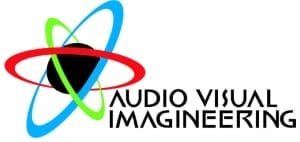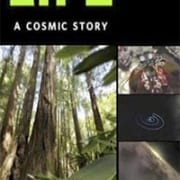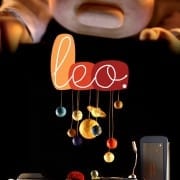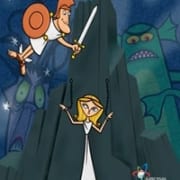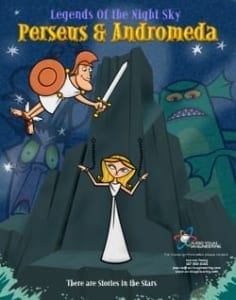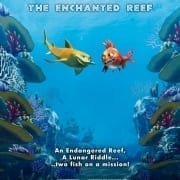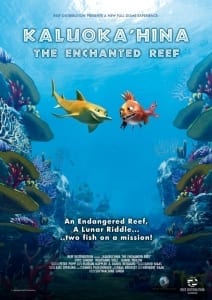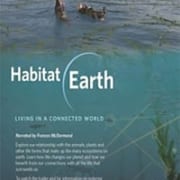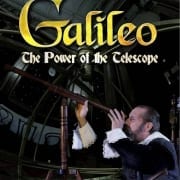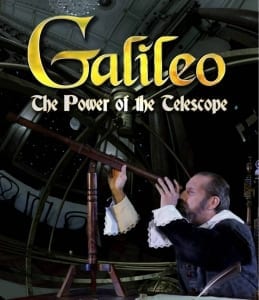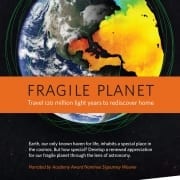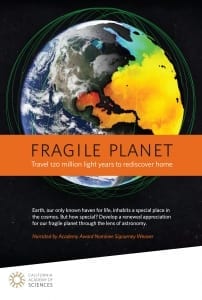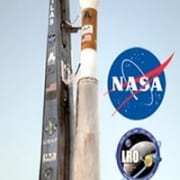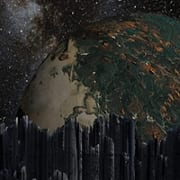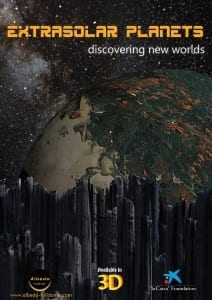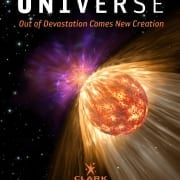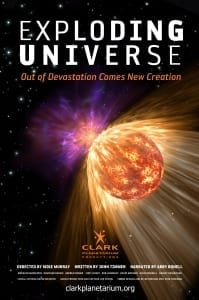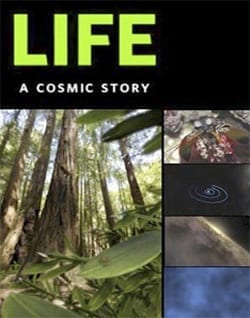
The show begins in a redwood forest, with the sounds of wind and life.
One redwood looms large, until we approach its branches and enter one of its leaves, adjusting our perspective to microscopic scales inside a cell.We see a pared-down version of its inner workings, learning about the process of photosynthesis and the role of DNA.
This scene sets the stage for the story of life.
We then leap backward billions of years to the origin of elements themselves. The early Universe contained mostly dark matter, which drew hydrogen and helium together to form the first stars. The carbon and heavier elements required by living organisms came from generations of stars.
We continue our journey, diving into the Milky Way Galaxy of several billion years ago. We approach a region in which stars are forming, where we encounter a protoplanetary disk surrounding our newborn Sun. We arrive at the young Earth, splashing down in deep water to visit a hydrothermal vent and to examine the formation of organic molecules. We then travel above a volcanic island to encounter an enriched “hot puddle” of water, in which nucleotides may have wrapped themselves in protective vesicles. Once life took hold, it radically changed our planet.
Earth’s early microorganisms created our oxygen atmosphere—and may have also triggered a global ice age, causing temperatures to drop precipitously and nearly freezing out life on our planet. We continue leaping forward in time, viewing the movement of continents and the changing environment for life, until we reach modern Earth.
We return home to look at Earth once more, circling the modern globe to review the evidence for the story we have heard. Much of what we understand about evolution we have pieced together from the fossil record, but we can also reassemble evolutionary history by studying life that surrounds us today. All life shares a common ancestry and common chemistry, all related at the molecular level. As we learn this, we pull away from individual images of life, and we end the show as we see their three-dimensional distribution form the double-helix strand of DNA. The audience is left immersed inside a representation of the structure of life’s shared origins.
Leo.
/in Full Dome Show /by rculverLeo.
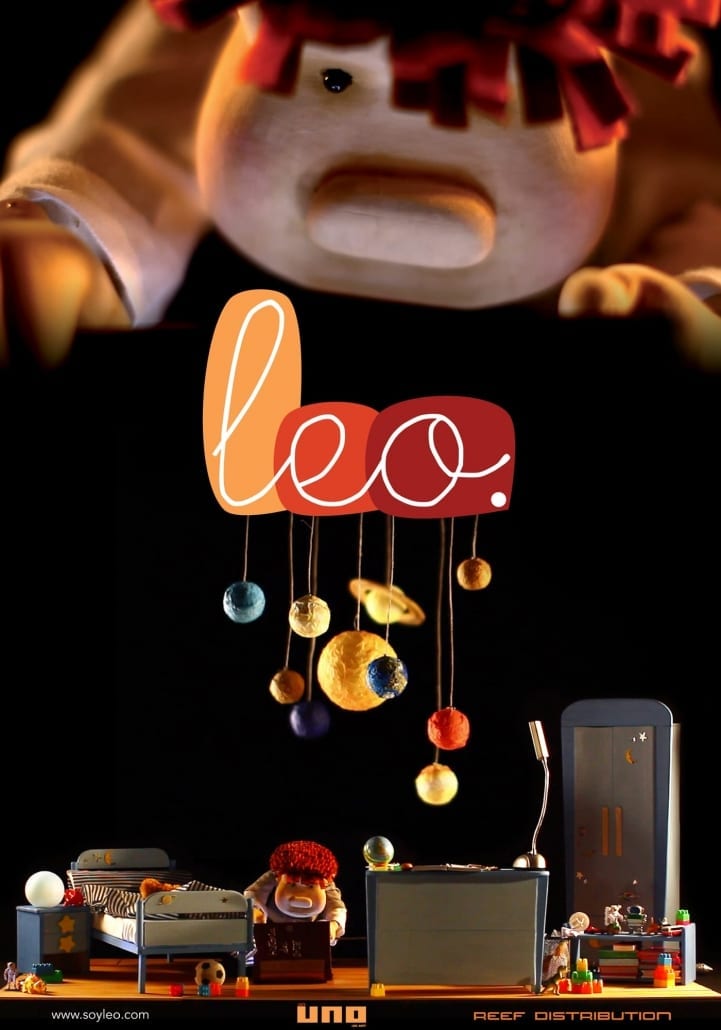
With Leo we take a journey through the history of Art…
and learn the basics of some of its most significant moments, such as the beginning of what is meant by art, with cave paintings, the genius of Art and Science of Leonardo Da Vinci, and we learn that there is not only one way to see the stars with Van Gogh.
Leo is an educational project about Art and Science, where two techniques are combined, puppets carved in wood and digital animation, with the aim of entertaining children and adults to awake their interest in Art and Science.
Legends of the Night Sky: Perseus & Andromeda
/in Full Dome Show /by rculverLegends of the Night Sky: Perseus & Andromeda
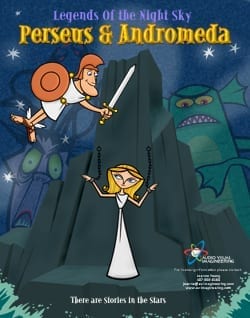
Perseus and Andromeda is 20 minutes of fun, while also teaching children and adults the Greek story about the stars.Planetarians can use Legends as pre-shows to a traditional star ID show and lecture. By engaging the audience with a wonderful story filled with humorous and exciting characters, you are also engaging their desire to learn about astronomy. People love Legends. Planetarians who have seen the laser version say it is educational AND entertaining, for adults as well as children. You can be sure your audiences will love Legends as well!
Kaluoka’hina – The Enchanted Reef
/in Full Dome Show /by rculverKaluoka’hina – The Enchanted Reef
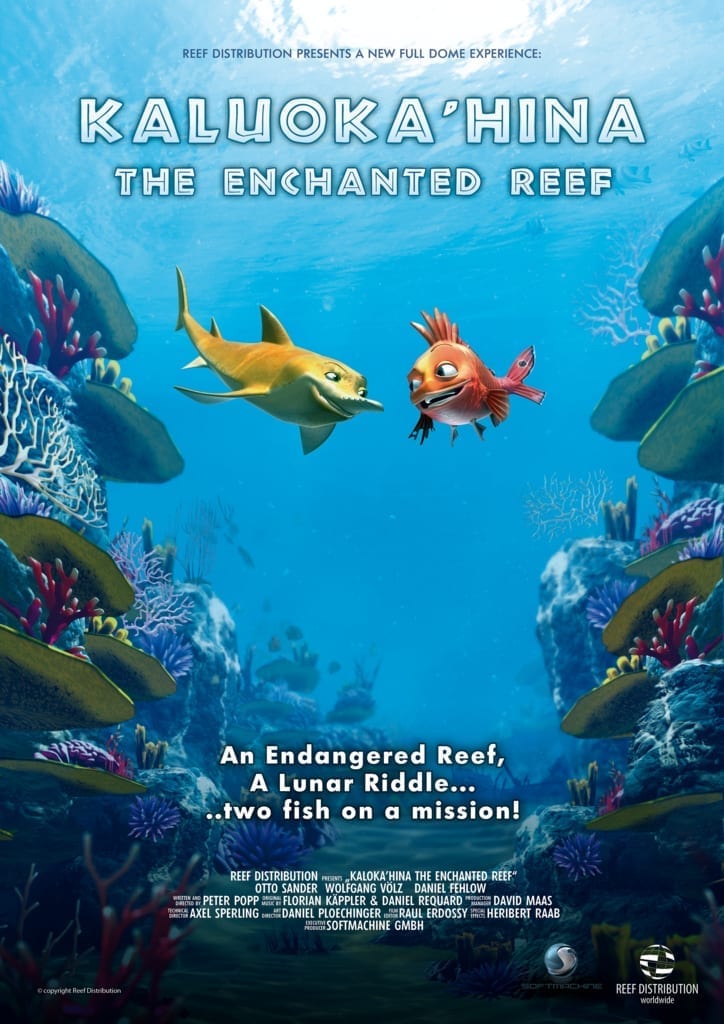
The vastness of our planet’s oceans guards unimaginable secrets.
One of its most precious is Kaluoka’hina, the enchanted reef whose magic protects it against humans finding it.
“Kaluoka’hina – The Enchanted Reef” is a pioneer work: it is the first fulldome movie with a plot originally produced for the 360° fulldome projection format. More than 2.5 million people have seen Kaluoka’hina (a fictional name for a coral reef somewhere in the oceans) in more than 150 planetariums or fulldome theaters around the world.
Habitat Earth
/in Full Dome Show /by rculverHabitat Earth
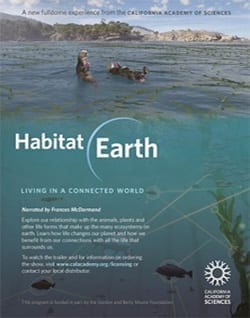
Living Networks Connect and Support Life Forms…
large and small—from colonies of tiny microbes and populations of massive whales to ever-expanding human societies. In the California Academy of Sciences’ latest original planetarium show, Habitat Earth, discover what it means to live in today’s connected world. Through stunning visualizations of the natural world, dive below the ocean’s surface to explore the dynamic relationships found in kelp forest ecosystems, travel beneath the forest floor to see how Earth’s tallest trees rely on tiny fungi to survive, and journey to new heights to witness the intricate intersection between human and ecological networks.
Galileo – The Power of the Telescope
/in Full Dome Show /by rculverGalileo – The Power of the Telescope
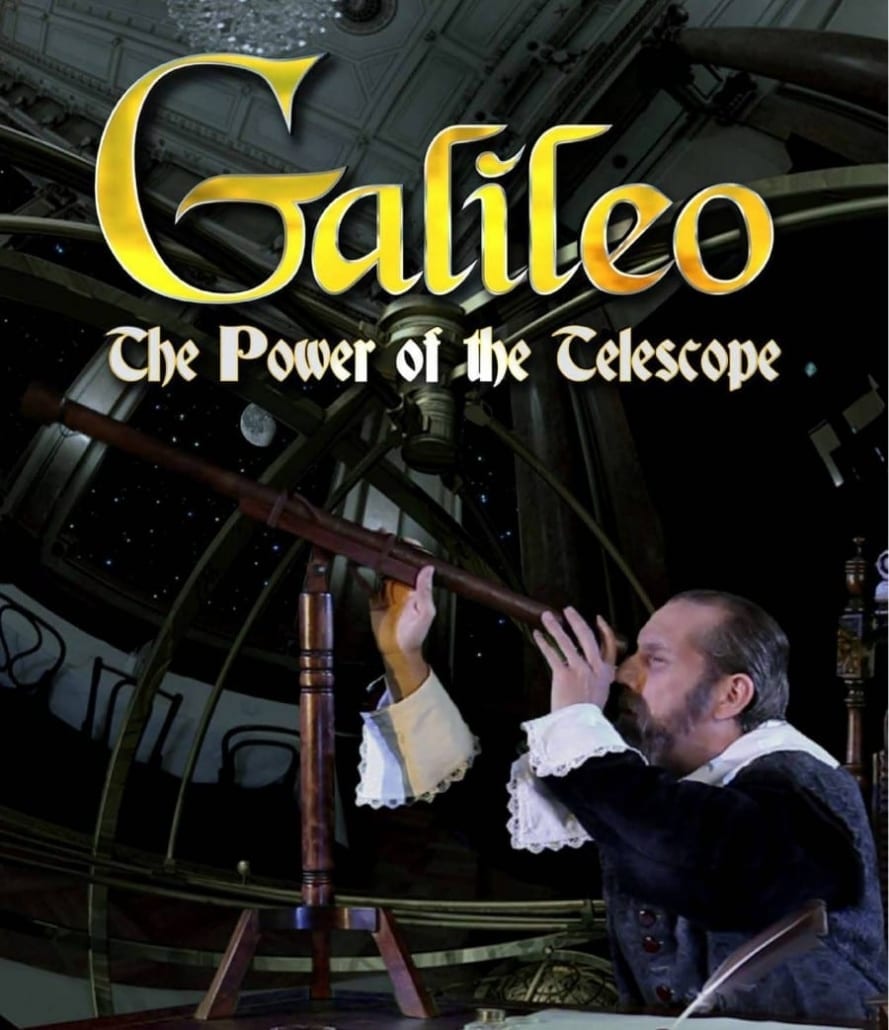
Two Eyes and Two Pieces of Glass Revolutionized Human Understanding 400 Years Ago.
The eyes belonged to Galileo Galilei, and the curved pieces of glass were the lenses of his telescope.
This show tells Galileo’s personal and powerful story, and explores how his discoveries displaced long-held views about the universe.
The film takes you back in time to Pisa, Italy, to experience Galileo’s early experiments with gravity and the laws of motion, his advocacy of the idea that the Earth revolves around the sun, and his work with early telescopes. You see how his keen observations culminated in The Starry Messenger, an early masterpiece in which Galileo described all his dazzling discoveries in a straightforward, easy to understand way.
Fragile Planet
/in Full Dome Show /by rculverFragile Planet
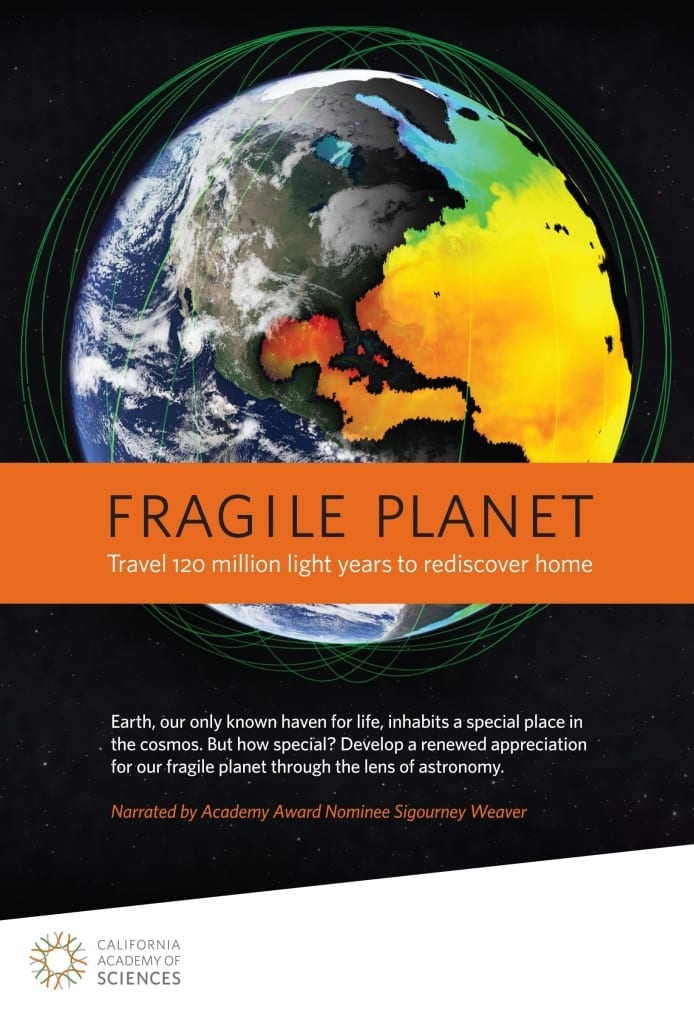
Fragile Planet Gives Audiences an Astronaut’s View of Earth, Highlighting Earths Unique Regions.
The journey then continues to the Moon, Mars, and beyond the Milky Way to search for habitats that might host extraterrestrial life. The show’s theme — that Earth is the only known haven for life, and thus is important to protect — echoes the themes of biodiversity and sustainability.
The visual foundation of the show lies in scientific visualization. From the high-resolution satellite imagery of Earth, the positions of galaxies more than 50 million light years distant, the three-dimensional terrain of Valles Marineris on Mars to the locations of extrasolar planetary systems in interstellar space, everything audiences will see in Fragile Planet has a basis in astronomers’ best understanding of the Universe.
Flight to the Moon
/in Full Dome Show /by rculverFlight to the Moon
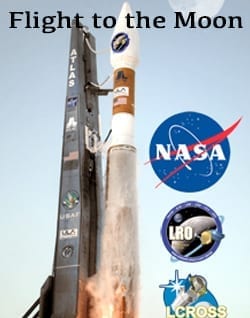
Clark Planetarium and NASA have partnered to create a 9-minute mini-show about NASA’s LRO and LCROSS missions to the Moon.
In June 2009, two unmanned spacecraft, the LRO (Lunar Reconnaissance Orbiter) and LCROSS (Lunar Crater Observation and Sensing Satellite) launched together in one Atlas 5 rocket from the Kennedy Space Center. The LRO spacecraft is mapping the moon in unprecedented detail. That October, LCROSS delivered the Centaur impactor into a shaded lunar crater (Cabeus) near the lunar south pole, creating a plume for the spacecraft to fly into and collect data to look for water.
Due to the unexpectedly complex treasure trove of data returned by LRO and LCROSS about the impact, it took many months for scientific results to be released. As results came in through 2010 and new spectacular orbital photography continues to come in from LRO, we waited until 2011 to release a more comprehensive show about the mission results.
Extrasolar Planets – discovering new worlds
/in Full Dome Show /by rculverExtrasolar Planets – discovering new worlds
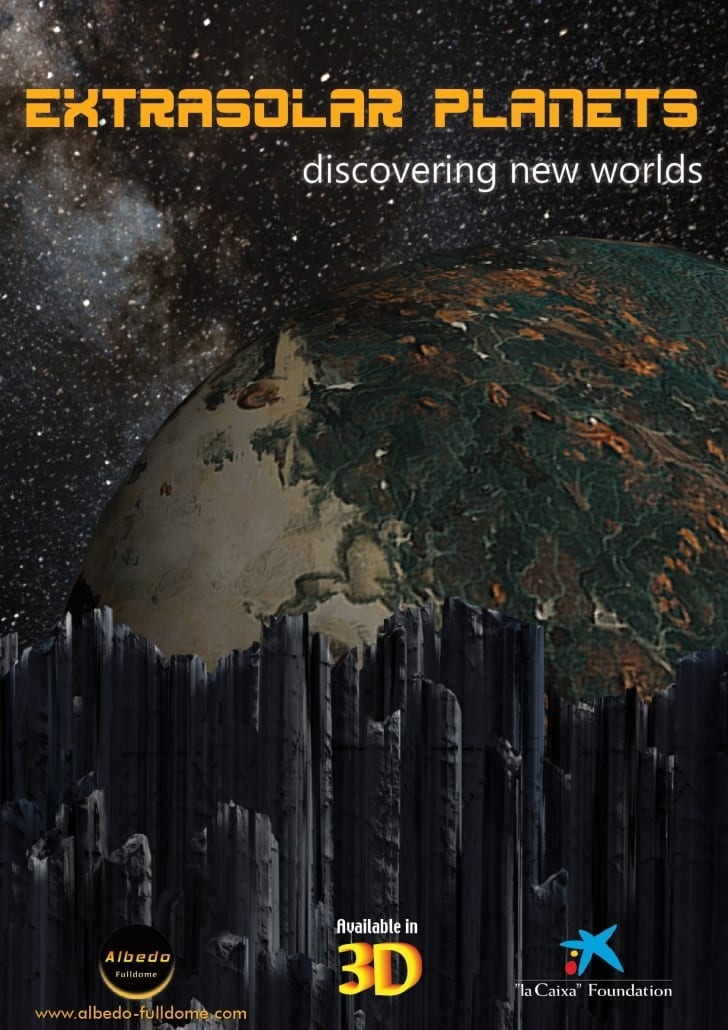
We live on a small planet that revolves around a star that is no different in size, luminosity, or location, than any other. It is just one among many.
Are the planets that orbit our star what distinguish it from the others? Are there also extrasolar planets that revolve around other stars? If that was the case, could it be that there are inhabitable worlds like Earth?
The endless variety of the Solar System is barely a reflection of the infinite diversity of the Universe. But, until now, we only know of one planet where life has developed… ours!
Astronomers on Earth study the movements of the stars, searching for planets in other suns.
Using unique instruments, they observe thousands of stars at the same time; minute by minute, measuring the amount of light from each one of them with extreme precision, and detecting if one of them periodically changes brightness, even if the change is barely perceptible, by one part per ten thousand. Scientists who analyze the gathered data are able to tell if the star is a candidate for having at least one planet.
Scientists hope one day to find life somewhere on one of the extra solar planets, even if only in the form of microorganisms. This would be a historical discovery. Could one of these worlds be suitable for the development of life?
The search for extra solar planets focuses on the neighboring stars of our galaxy, the Milky Way, but this doesn’t mean they are close to us. Our galaxy is enormous, so enormous that a ray of light takes more than one hundred thousand years to cross from one side to the other.
However, if there is an extra-terrestrial civilization in our galactic vicinity, they just may have noticed our presence because, without intending to, we have been transmitting signals for quite a long time.
Exploding Universe
/in Full Dome Show /by rculverExploding Universe
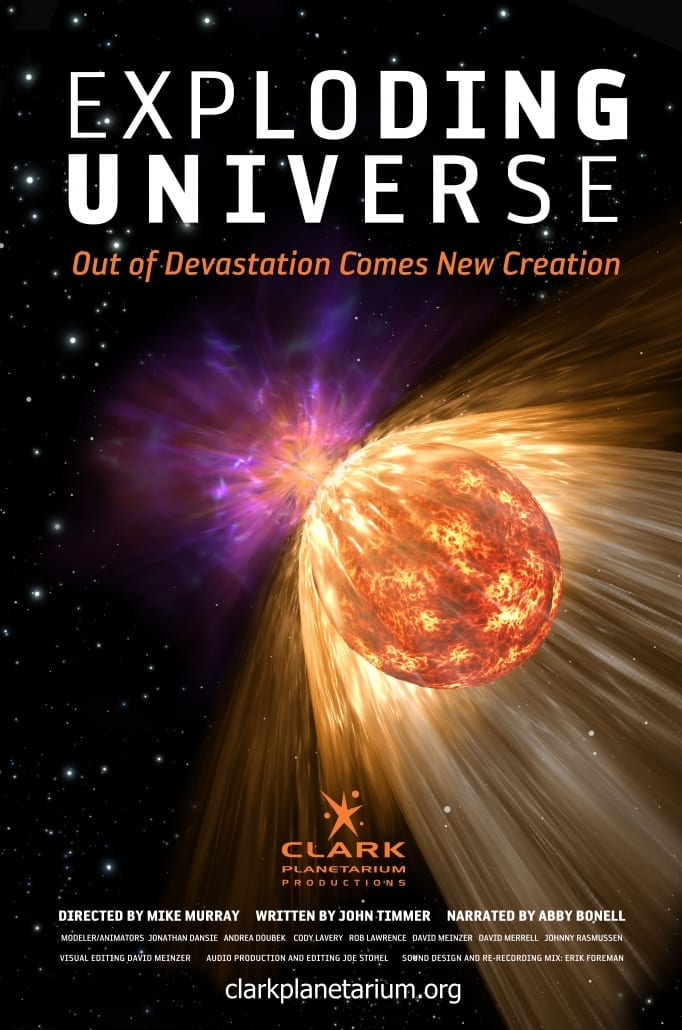
When giant stars explode as “supernovae” they seed the galaxies with heavy elements that make planets and life possible. Some collisions we are only just now starting to understand. For example, when Black Holes collide, they can throw off some of the most energetic particles known, ripping and warping space as they go. But other outbursts have profound effects as well, such as the beauty and power of supervolcanoes which have contributed to the transformation of our world into the life bearing oasis we now enjoy. The smallest of explosions, such as the forced impact of high energy particles, can echo the foundational events of the early universe.
As the universe has transformed into the structure we live in now, even the most elementary particles have endured. This show follows the path of one of these “particles,” a proton, as it participates in nature’s astounding events of rebirth and renewal.
“Exploding Universe” represents the most ambitious commitment of time and talent that Clark Planetarium Productions has ever invested in. It was mastered in full 4k X 4k resolution and a frame rate of 60 frames per second (lower resolutions and 30fps are still available).
